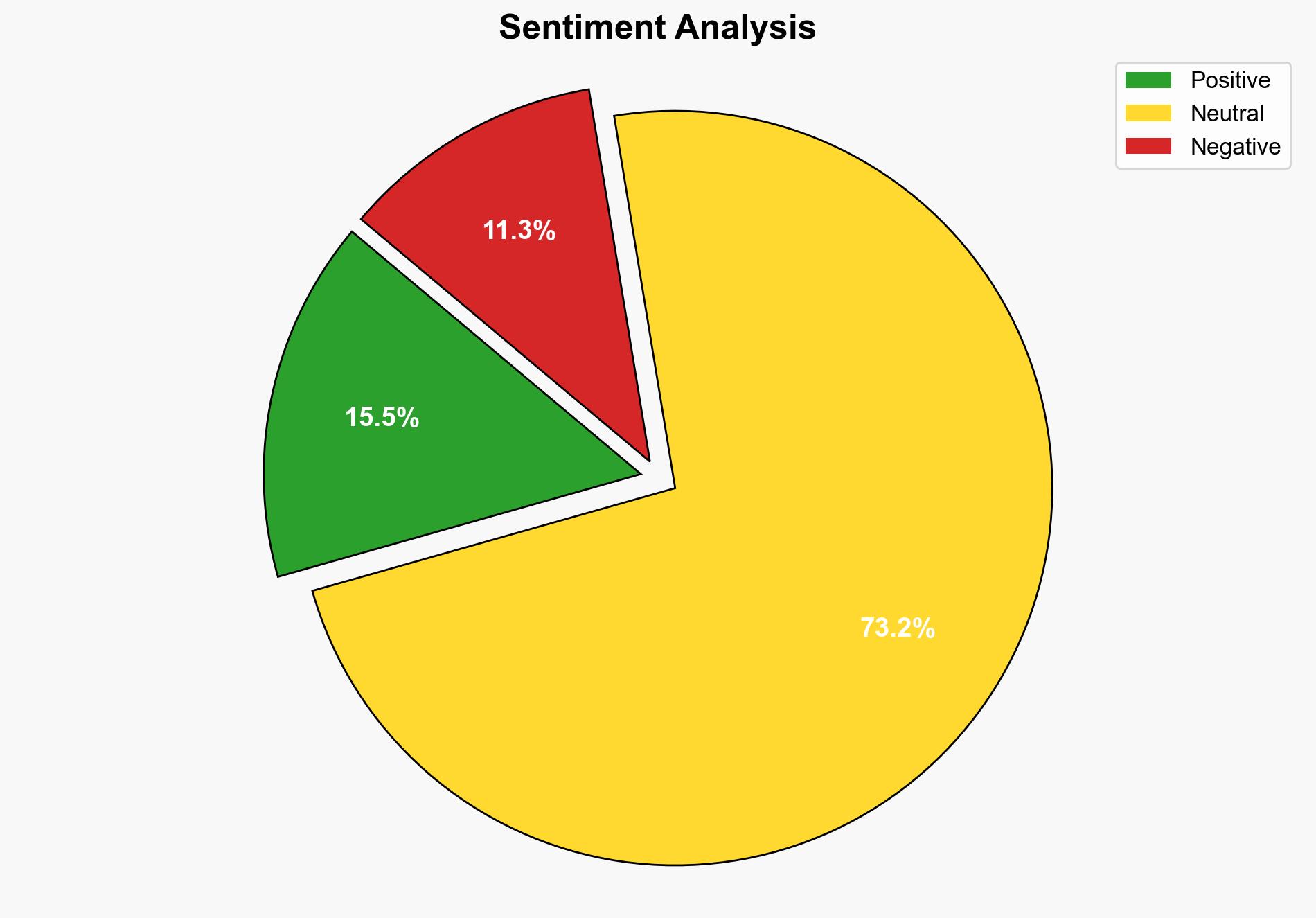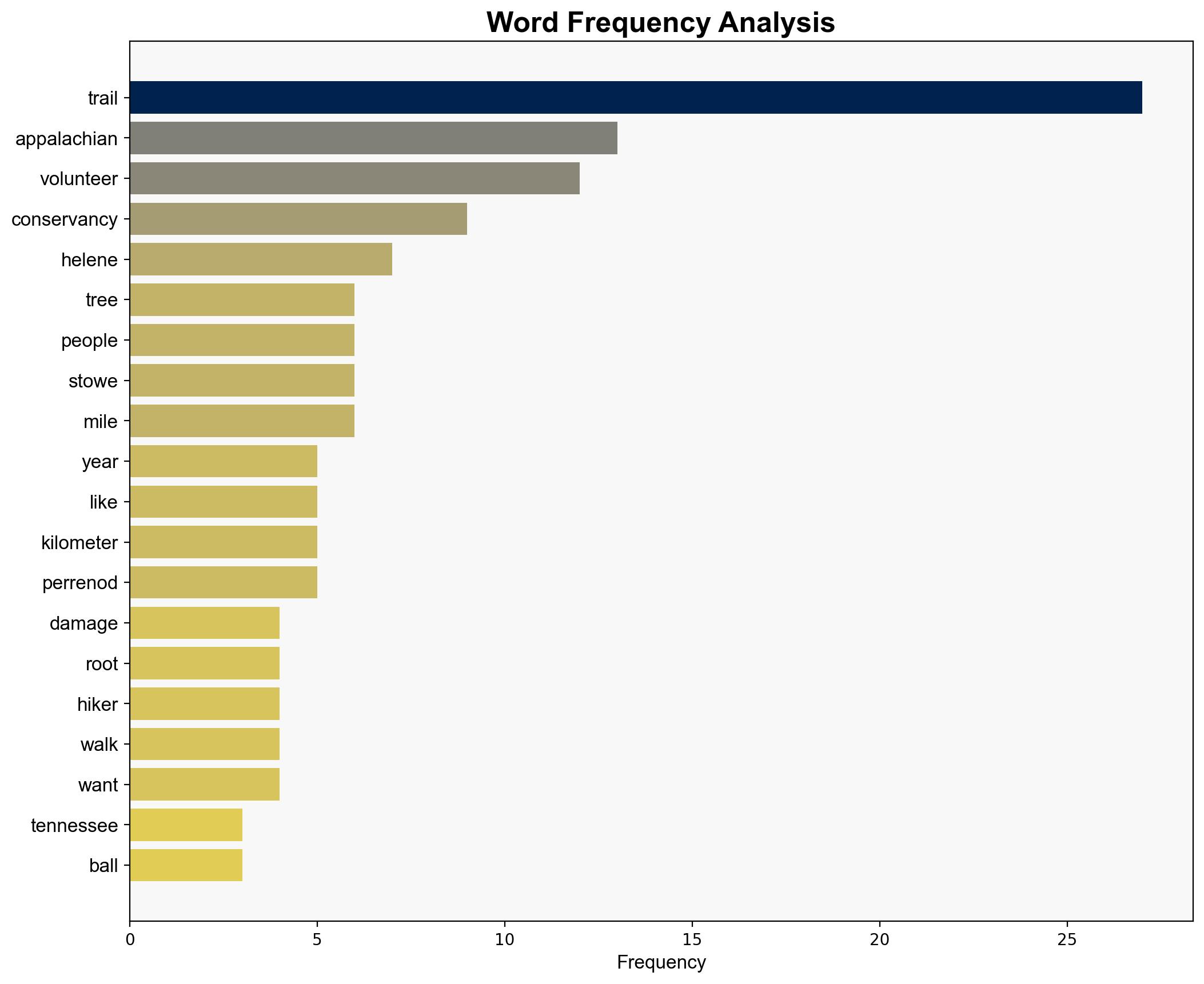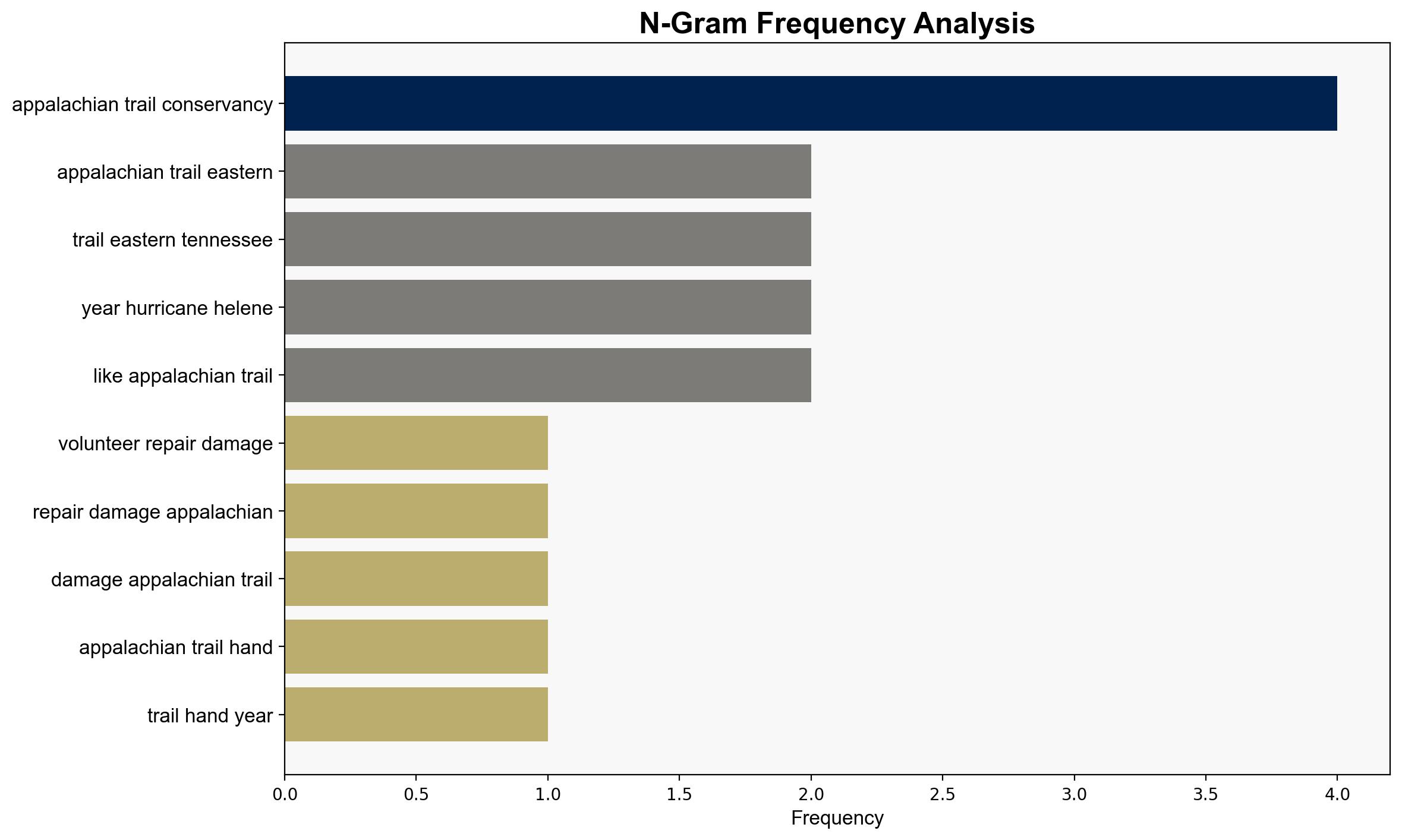Volunteers repair damaged parts of Appalachian Trail by hand almost a year after Helene – ABC News
Published on: 2025-07-26
Intelligence Report: Volunteers repair damaged parts of Appalachian Trail by hand almost a year after Helene – ABC News
1. BLUF (Bottom Line Up Front)
The strategic judgment suggests that the reliance on volunteer efforts for the restoration of the Appalachian Trail post-Hurricane Helene is both a strength and a vulnerability. The most supported hypothesis is that volunteerism, while crucial, is insufficient without federal support, posing a risk to the trail’s long-term sustainability. Confidence level: Moderate. Recommended action: Advocate for increased federal resources and strategic partnerships to ensure the trail’s resilience against future natural disasters.
2. Competing Hypotheses
1. **Hypothesis A**: Volunteer efforts are sufficient to restore and maintain the Appalachian Trail post-Hurricane Helene, ensuring its long-term sustainability.
2. **Hypothesis B**: Volunteer efforts, while essential, are insufficient without substantial federal support and resources, risking the trail’s long-term sustainability.
Using the Analysis of Competing Hypotheses (ACH) 2.0, Hypothesis B is better supported. The source highlights the strain on federal resources and the critical role volunteers play, suggesting that without federal support, sustainability is compromised.
3. Key Assumptions and Red Flags
– **Assumptions**: Volunteers will continue to be available and willing to contribute significant time and effort. Federal resources will remain strained.
– **Red Flags**: Over-reliance on volunteerism without addressing federal budget cuts. Potential for volunteer fatigue or decreased participation over time.
– **Blind Spots**: Lack of detailed data on federal budget allocations and long-term volunteer engagement trends.
4. Implications and Strategic Risks
– **Economic**: Decreased tourism due to trail damage could impact local economies reliant on hiker traffic.
– **Geopolitical**: None directly identified, but regional neglect could foster local dissatisfaction.
– **Psychological**: Volunteer burnout could lead to decreased morale and participation.
– **Cascading Threats**: Future natural disasters could exacerbate existing vulnerabilities without strategic intervention.
5. Recommendations and Outlook
- **Mitigation**: Lobby for increased federal funding and resources to support volunteer efforts and ensure comprehensive trail restoration.
- **Opportunities**: Develop partnerships with corporate sponsors and NGOs to supplement volunteer efforts and resources.
- **Scenario Projections**:
- **Best Case**: Increased funding and strategic partnerships lead to a fully restored and resilient trail.
- **Worst Case**: Continued resource strain and volunteer fatigue result in significant sections of the trail remaining impassable.
- **Most Likely**: Partial restoration with ongoing challenges due to limited resources and volunteer capacity.
6. Key Individuals and Entities
– Jake Stowe
– Matt Perrenod
– Appalachian Trail Conservancy
– Associated Press (journalist involvement)
7. Thematic Tags
natural disaster recovery, volunteerism, federal resource allocation, environmental sustainability





